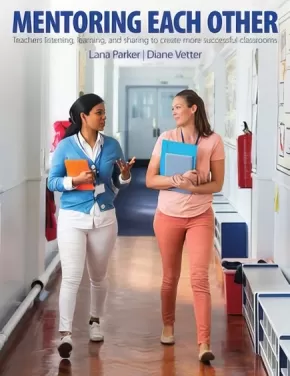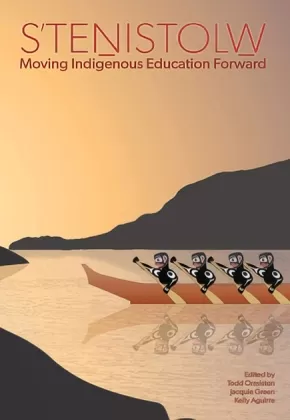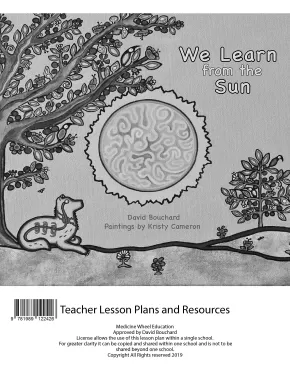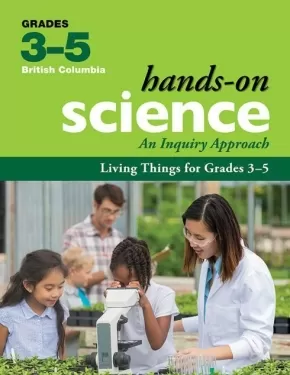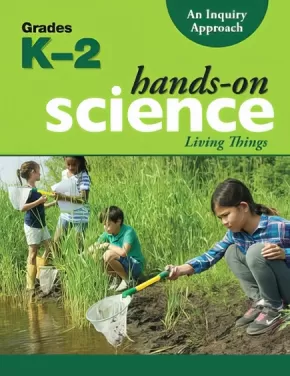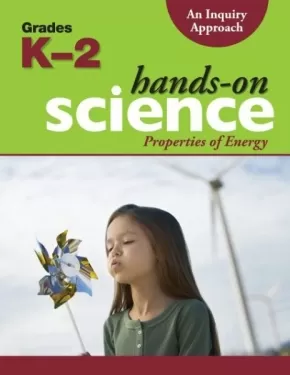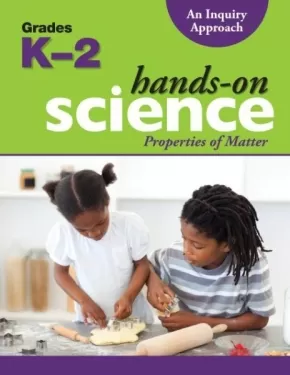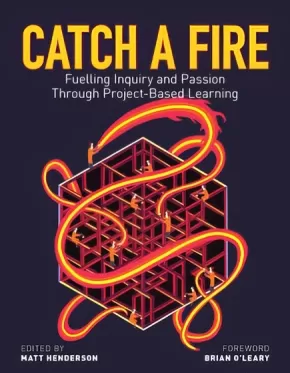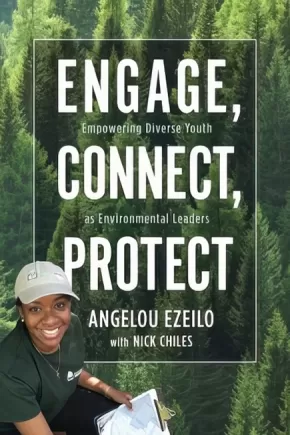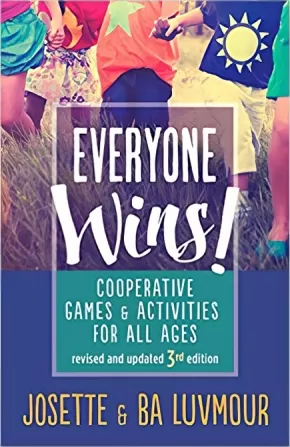
Educator Resources
91
-
105
of
213 Results;
Sort By
Go To
of 15
Mācī-Anihšināpēmowin / Beginning Saulteaux (10 in Stock) - ON SALE
$30.00 $34.95
Format:
Coil Bound
Text Content Territories:
Indigenous Canadian; First Nations; Anishinaabeg; Ojibway; Saulteaux;
ISBN / Barcode: 9780889777514
Synopsis:
Synopsis:
Mācī-Anihšināpēmowin / Beginning Saulteaux is an introductory look at one of the most widely spoken of all North American Indigenous languages, regionally known as Saulteaux, Ojibway, Ottawa (Odawa), Chippewa, and Algonquian. In an easy-to-use and easy-to-read series of lessons, both designed for self-study or for use in the classroom, Beginning Saulteaux will guide beginners through the language’s grammatical structures and spelling systems, as well as everyday terms and phrases. The book grounds the language in both traditional and contemporary contexts, and sheds light on the Saulteaux world view. For example, there is no word for good-bye in the language, so upon parting people will usually say Kika-wāpamin mīnawā, meaning “I’ll see you again.”
Educator & Series Information
The third in our Indigenous Languages for Beginners series, Beginning Saulteaux is an invaluable resource produced in consultation with Elders, Language Keepers, and community members, and continues our commitment to revitalizing Indigenous languages.
Additional Information
304 pages | 8.50" x 11.00" | Spiral Bound
Mentoring Each Other: Teachers Listening, Learning, and Sharing to Create More Successful Classrooms
$28.95
Format:
Paperback
Grade Levels: University/College;
ISBN / Barcode: 9781551383460
Synopsis:
Synopsis:
This practical book explores ways teachers can collaborate and learn from each other in formal and informal situations. It demonstrates that a mentoring relationship can benefit both new and experienced teachers. Full of strategies that are practical and easy to implement, the book offers solutions to common questions, opportunities, and challenges that face teachers every day. Based on extensive experience, this highly readable book includes personal histories and experiences around important values and advocates for honest reflection and meaningful feedback. An essential resource for all educators, the book champions reciprocal and ongoing processes of learning, listening, and sharing.
Educator Information
Key Features:
- This book features ready-to-use strategies demonstrate how mentoring for teacher excellence can be easily implemented in daily practice.
- Mentoring Each Other includes practical advice for educators who engage in mentoring relationship as well as valuable suggestions that help new teachers deal with classroom challenges.
- The authors have vast experience as mentors, classroom teachers, and university lecturers who present at major educational conferences across North America.
- This approach to mentoring is applicable to a broad range of professional learning communities and an increase in new teachers entering the system make this a much-needed resource for many.
Additional Information
160 pages | 8.38" x 10.88"
Powerful Writing Structures: Brain Pocket Strategies for Supporting a Year-Long Writing Program
$32.95
Format:
Paperback
ISBN / Barcode: 9781551383446
Synopsis:
Synopsis:
This timely book uses thinking structures to deepen student writing. It revolves around brain pockets to help students appreciate the qualities of different writing forms. Some powerful examples include memory pockets for personal narrative writing, fact pockets for nonfiction, and imagination pockets for story writing. Detailed lesson plans are featured along with sample anchor books and book lists. Based on extensive classroom testing, this unique approach to teaching writing is illustrated by student samples throughout the book. Suggestions for setting up an effective writing program and assessment tips for guiding instruction complete this comprehensive approach to developing a year-long writing program.
Educator Information
Powerful Writing Structures details how to set up an effective writing program that focuses on process rather than product.
Includes detailed lessons that focus on personal narrative, nonfiction and story writing.
Includes book lists of the best children’s books to anchor, support and extend lessons, student examples help illustrate how the strategies work in real classrooms.
Additional Information
160 pages | 8.38" x 10.88"
S'TENISTOLW: Moving Indigenous Education Forward (5 in Stock, Out of Print)
$33.00
Format:
Paperback
Text Content Territories:
Indigenous Canadian;
Grade Levels: University/College;
ISBN / Barcode: 9781926476285
Synopsis:
Synopsis:
S’TENISTOLW is a SENĆOŦEN term referencing the concept of ‘moving forward’. This book highlights both the doing and being of Indigenous education. Authors share their knowledge on the themes of: Land-Based Learning; Supporting Learners; Indigenization; and Strengthening Alliances. Keynote writings by renowned Indigenous scholars Gregory Cajete, Graham Hingangaroa Smith, Linda Tuhiwai Smith and Kathy Absolon are intertwined throughout the book.
Reviews"
"This book is like a visit home, to talk with the wisest people you know on your reserve or in your neighbourhood. There is an intimacy in how each author shares their own stories of hope, insight and resilience. You will be nourished, strengthened, and inspired. You may be even gently chastised as you read about how Indigenous ways of learning are gaining ground in the educational settings around us. If you enjoy such visits you will treasure this book." — John Borrows, PhD, Canada Research Chair in Indigenous Law, University of Victoria
"S’TENISTOLW is a wonderful feast of stories, experiences, teachings, and approaches of educational and community leaders involved in Indigenous post-secondary education. Practitioners-scholars-leaders receive gifts of hope, inspiration, and transforming potential to live Indigenous education in good ways through innovative Indigenous pedagogies, relational theories, authentic community and land-based programs, and critical engagement." — Jo-Ann Archibald, PhD, Professor of Educational Studies, University of British Columbia
"I can’t wait to share this book! It offers timely and pivotal insights from leading theorists and practitioners about the transformational project of “Indigenizing” the academy and other institutions. I’m sure it will serve educators, students and community members alike as we think through complex questions of transformative, Indigenous knowledge production and education." — Kim Anderson, PhD Canada Research Chair in Indigenous Relationships, University of Guelph
Additional Information
166 pages | 6.00" x 9.00"
Teaching Fairly in an Unfair World 2nd Edition
$28.95
Format:
Paperback
ISBN / Barcode: 9781551383439
Synopsis:
Synopsis:
An open-ended approach to giving students voice and challenging them to think critically about social justice issues.
This era of so-called fake news demands a deeper curriculum that questions the inconsistencies of facts and opinions in various texts and images. This timely new edition of a groundbreaking book offers students opportunities to connect with social justice issues through inventive language exploration and the active examination of all forms of media. It encourages teachers to evaluate their core teaching beliefs and recognize the realities of their students’ lives to develop a richer understanding of our complex world. A glossary of more than 50 strategies, along with reproducible pages for easy classroom use, complements this essential resource.
Educator Information
This edition has been updated to reflect current political, social, and cultural challenges.
This book will help students understand what is fair for them and others. It features engaging ways to connect classrooms to social justice issues through collaboration, language instruction and responding to media.
Includes detailed mini-lessons that have inspired many classrooms.
Keywords/Subjects: inclusive classrooms, inclusivity, voice and choice, critical thinking, thinking skills, media awareness, social justice, empathy, understanding, comprehension, classroom strategies, fake news, facts, inconsistency, reporting, issues, evaluation, teachers, education.
Additional Information
160 pages | 8.38" x 10.88" | 2nd Edition
Teaching Tough Topics: How Do I Use Children's Literature to Build a Deeper Understanding of Social Justice, Equity, and Diversity?
$28.95
Format:
Paperback
Text Content Territories:
Indigenous;
ISBN / Barcode: 9781551383415
Synopsis:
Synopsis:
Teaching Tough Topics shows teachers how to lead students to become caring citizens as they read and respond to quality children’s literature. It focuses on topics that can be challenging or sensitive yet significant for building an understanding of social justice, diversity and equity. Racism, homophobia, bullying, religious intolerance, poverty, and physical and mental challenges are just some of the themes explored. The book is rooted in the belief that, by using picture books, novels, poetry, and nonfiction, teachers can enrich learning with compassion and empathy as students make connections to texts, to others and to the world.
Educator Information
Teaching Tough Topics is a timely approach to a better understanding of diversity, equity and social justice with clear instructions on how to implement a range of instructional strategies at different grade levels.
This book offers a valuable overview of tough topics including bullying, poverty, homophobia, gender, racism, death, Indigenous culture, physical and mental challenges, and religious intolerance.
Includes a comprehensive, up-to-date book list including picture books, novels, poetry and nonfiction titles that can be used to explore each topic.
Contains some Indigenous content.
Additional Information
144 pages | 8.38" x 10.88"
We Learn from the Sun: Lesson Plans and Resources
$7.99
Artists:
Format:
Paperback
Text Content Territories:
Indigenous Canadian; First Nations; Anishinaabeg;
ISBN / Barcode: 9781989122426
Synopsis:
Synopsis:
David Bouchard is a bestselling author, speaker and educator. He is Canada’s most sought after public speaker. We Learn from the Sun is an Indigenous rhyming poem based on his best selling book Seven Sacred Teachings.
This is a Teacher Lesson Plan and Resource Guild to accompany We Learn from the Sun, a richly illustrated book by Métis writer David Bouchard and Métis illustrator Kristy Cameron that weaves together Woodland style paintings with a rhythmic poem about the spiritual lessons that we can learn from the Sun and the seven sacred teachings.
Educator Information
This lesson plan and resource guide is approved by David Bouchard. License allows the use of this lesson plan within a single school.
The English lesson plans for We Learn From The Sun, includes:
– Fill in the Blanks Activity
– Word Search
– Colouring
– Write Your Own Poetry
– Matching Activity
Additional Information
15 pages | 8.50" x 11.00"
BC Hands-On Science: An Inquiry Approach - Land, Water, and Sky for Grades K-2
$92.00
Format:
Coil Bound
Text Content Territories:
Indigenous Canadian;
ISBN / Barcode: 9781553797975
Synopsis:
Synopsis:
Land, Water, and Sky from Hands-On Science: An Inquiry Approach completely aligns with the redesigned Science Curriculum for British Columbia. Grounded in the Know-Do-Understand model, First Peoples’ knowledge and perspectives, and student-driven scientific inquiry, this custom-written resource:
- emphasizes Core Competencies, so students engage in deeper and lifelong learning
- develops Curricular Competencies as students explore science through hands-on activities
- fosters a deep understanding of the Big Ideas in science
Using proven Hands-On features, Land, Water, and Sky contains information and materials for both teachers and students including: Curricular Competencies correlation charts; background information on the science topics; complete, easy-to-follow lesson plans; reproducible student materials; and materials lists.
Innovative new elements have been developed specifically for the new curriculum:
- a multi-age approach
- a five-part instructional process—Engage, Explore, Expand, Embed, Enhance
- an emphasis on technology, sustainability, and personalized learning
- a fully developed assessment plan for summative, formative, and student self-assessment
- a focus on real-life Applied Design, Skills, and Technologies
- learning centres that focus on multiple intelligences and universal design for learning (UDL)
- place-based learning activities, Makerspace centres, and Loose Parts
In Land, Water, and Sky students investigate characteristics of the land, water, and sky. Core Competencies and Curricular Competencies will be addressed while students explore the following Big Ideas:
- Daily and seasonal changes affect all living things.
- Observable patterns and cycles occur in the local sky and landscape.
- Water is essential to all living things, and it cycles through the environment.
Educator Information
This book is from the Hands-On Science: An Inquiry Approach (for BC) series. The new Hands-On Science comprehensive resources completely align with the redesigned Science Curriculum for British Columbia.
Recommended for use with children ages 4-8.
Additional Information
150 pages | 8.5 " x 11"
BC Hands-On Science: An Inquiry Approach - Living Things for Grades 3-5
$92.00
Format:
Coil Bound
Text Content Territories:
Indigenous Canadian;
ISBN / Barcode: 9781553798750
Synopsis:
Synopsis:
Living Things from Hands-On Science for British Columbia completely aligns with BC’s New Curriculum for Science. Grounded in the Know-Do-Understand model, First Peoples knowledge and perspectives, and student-driven scientific inquiry, this custom-written resource:
- emphasizes Core Competencies, so students engage in deeper and lifelong learning
- develops Curricular Competencies through hands-on activities
- fosters a deep understanding of the Big Ideas in science
Using proven Hands-On features, Living Things contains information and materials for both teachers and students including: Curricular Competencies correlation charts; background information on the science topics; complete, easy-to-follow lesson plans; reproducible student materials; and materials lists.
Innovative new elements have been developed specifically for the new curriculum:
- a multi-age approach
- an emphasis on technology, sustainability, and personalized learning
- a fully developed assessment plan for summative, formative, and student self-assessment
- a focus on real-life Applied Design, Skills, and Technologies
- learning centres that focus on multiple intelligences and universal design for learning (UDL)
- place-based learning activities and Makerspaces
Living Things for Grades 3-5 addresses Core Competencies and Learning Standards while students
explore the following Big Ideas:
- Living things are diverse, can be grouped, and interact in their ecosystems.
- All living things sense and respond to their environment.
- Multicellular organisms have organ systems that enable them to survive and interact within their environment.
Educator Information
This book is from the Hands-On Science: An Inquiry Approach (for BC) series. The new Hands-On Science comprehensive resources completely align with the redesigned Science Curriculum for British Columbia.
Recommended for use with students in grades 3 to 5.
Additional Information
150 pages | 8.50" x 11.00"
BC Hands-On Science: An Inquiry Approach - Living Things for Grades K-2
$92.00
Format:
Coil Bound
Text Content Territories:
Indigenous Canadian;
ISBN / Barcode: 9781553797555
Synopsis:
Synopsis:
Living Things from Hands-On Science: An Inquiry Approach completely aligns with the redesigned Science Curriculum for British Columbia. Grounded in the Know-Do-Understand model, First Peoples’ knowledge and perspectives, and student-driven scientific inquiry, this custom-written resource:
- emphasizes Core Competencies, so students engage in deeper and lifelong learning
- develops Curricular Competencies as students explore science through hands-on activities
- fosters a deep understanding of the Big Ideas in science
Using proven Hands-On features, Living Things contains information and materials for both teachers and students including: Curricular Competencies correlation charts; background information on the science topics; complete, easy-to-follow lesson plans; reproducible student materials; and materials lists.
Innovative new elements have been developed specifically for the new curriculum:
- a multi-age approach
- a five-part instructional process—Engage, Explore, Expand, Embed, Enhance
- an emphasis on technology, sustainability, and personalized learning
- a fully developed assessment plan for summative, formative, and student self-assessment
- a focus on real-life Applied Design, Skills, and Technologies
- learning centres that focus on multiple intelligences and universal design for learning (UDL)
- place-based learning activities, Makerspace centres, and Loose Parts
In Living Things students investigate plants and animals. Core Competencies and Curricular Competencies will be addressed while students explore the following Big Ideas:
- Plants and animals have observable features.
- Living things have features and behaviours that help them survive in their environment.
- Living things have life cycles adapted to their environment.
Educator Information
This book is from the Hands-On Science: An Inquiry Approach (for BC) series. The new Hands-On Science comprehensive resources completely align with the redesigned Science Curriculum for British Columbia.
Recommended for use with children ages 4-8.
Additional Information
150 pages | 8.5 " x 11"
BC Hands-On Science: An Inquiry Approach - Properties of Energy for Grades K-2
$92.00
Format:
Coil Bound
Text Content Territories:
Indigenous Canadian;
ISBN / Barcode: 9781553797982
Synopsis:
Synopsis:
Properties of Energy from Hands-On Science: An Inquiry Approach completely aligns with the redesigned Science Curriculum for British Columbia. Grounded in the Know-Do-Understand model, First Peoples’ knowledge and perspectives, and student-driven scientific inquiry, this custom-written resource:
- emphasizes Core Competencies, so students engage in deeper and lifelong learning
- develops Curricular Competencies as students explore science through hands-on activities
- fosters a deep understanding of the Big Ideas in science
Using proven Hands-On features, Properties of Energy contains information and materials for both teachers and students including: Curricular Competencies correlation charts; background information on the science topics; complete, easy-to-follow lesson plans; reproducible student materials; and materials lists.
Innovative new elements have been developed specifically for the new curriculum:
- a multi-age approach
- a five-part instructional process—Engage, Explore, Expand, Embed, Enhance
- an emphasis on technology, sustainability, and personalized learning
- a fully developed assessment plan for summative, formative, and student self-assessment
- a focus on real-life Applied Design, Skills, and Technologies
- learning centres that focus on multiple intelligences and universal design for learning (UDL)
- place-based learning activities, Makerspace centres, and Loose Parts
In Properties of Energy students investigate properties of energy. Core Competencies and Curricular Competencies will be addressed while students explore the following Big Ideas:
- The motion of objects depends on their properties.
- Light and sound can be produced and their properties can be changed.
- Forces influence the motion of an object.
Educator Information
This book is from the Hands-On Science: An Inquiry Approach (for BC) series. The new Hands-On Science comprehensive resources completely align with the redesigned Science Curriculum for British Columbia.
Recommended for use with children ages 4-8.
Additional Information
181 pages | 8.5 " x 11"
BC Hands-On Science: An Inquiry Approach - Properties of Matter for Grades K-2
$92.00
Format:
Coil Bound
Text Content Territories:
Indigenous Canadian;
ISBN / Barcode: 9781553797999
Synopsis:
Synopsis:
Properties of Matter from Hands-On Science: An Inquiry Approach completely aligns with the redesigned Science Curriculum for British Columbia. Grounded in the Know-Do-Understand model, First Peoples’ knowledge and perspectives, and student-driven scientific inquiry, this custom-written resource:
- emphasizes Core Competencies, so students engage in deeper and lifelong learning
- develops Curricular Competencies as students explore science through hands-on activities
- fosters a deep understanding of the Big Ideas in science
Using proven Hands-On features, Properties of Matter contains information and materials for both teachers and students including: Curricular Competencies correlation charts; background information on the science topics; complete, easy-to-follow lesson plans; reproducible student materials; and materials lists.
Innovative new elements have been developed specifically for the new curriculum:
- a multi-age approach
- a five-part instructional process—Engage, Explore, Expand, Embed, Enhance
- an emphasis on technology, sustainability, and personalized learning
- a fully developed assessment plan for summative, formative, and student self-assessment
- a focus on real-life Applied Design, Skills, and Technologies
- learning centres that focus on multiple intelligences and universal design for learning (UDL)
- place-based learning activities, Makerspace centres, and Loose Parts
In Properties of Matter students investigate matter. Core Competencies and Curricular Competencies will be addressed while students explore the following Big Ideas:
- Humans interact with matter every day through familiar materials.
- Materials can be changed through physical and chemical processes.
- Matter is useful because of its properties.
Educator Information
This book is from the Hands-On Science: An Inquiry Approach (for BC) series. The new Hands-On Science comprehensive resources completely align with the redesigned Science Curriculum for British Columbia.
Recommended for use with children ages 4-8.
Additional Information
150 pages | 8.5" x 11"
Catch a Fire: Fuelling Inquiry and Passion Through Project-Based Learning
$29.00
Editors:
Format:
Paperback
ISBN / Barcode: 9781553797517
Synopsis:
Synopsis:
This book will inspire, challenge and engage you—and transform your teaching and learning.
Each chapter in this book is written by a different educator or team about their experiences with project-based learning, both in and out of the classroom. They reflect not only on the how of project-based learning, but more importantly, on the what and the why. They offer insight into how connecting with learners, honouring their experiences, and promoting deep and rich questioning can be the path to powerful projects and learning. Their writing and thinking is saturated with empathy, expertise, a desire to improve their practice, and an acknowledgment of the need to collaborate.
Reviews
"...an impressive book written by and for a range of practitioners that show how Project Based Learning can be used in all sorts of environments with all learners. This is a very handy book for educators interested in refining their project-based learning chops." — Elliot Washore, Ed.D., Co-founder Big Picture Learning
"Catch A Fire is the right book at the right time for anyone interested in the transformative potential of project-based learning. Henderson has put together an incredible array of case studies, examples, and voices on the methodology that will prove both useful and thought provoking to educators of all shapes and sizes. Read this book and get inspired." — Jay Roberts, Professor of Education at Earlham College, author of Beyond Learning By Doing
Educator Information
For K-12 educators.
Additional Information
224 pages | 7.00" x 9.00"
Engage, Connect, Protect: Empowering Diverse Youth as Environmental Leaders
$19.99
Format:
Paperback
Text Content Territories:
Indigenous American; Native American;
ISBN / Barcode: 9780865719187
Synopsis:
Synopsis:
Building environmental strength through a diversity of youth.
While concern about the state of our land, air, and water continues to grow, there is widespread belief that environmental issues are primarily of interest to wealthy white communities. Engage, Connect, Protect explodes this myth, revealing the deep and abiding interest that African American, Latino, and Native American communities – many of whom live in degraded and polluted parts of the country – have in our collective environment.
Part eye-opening critique of the cultural divide in environmentalism, part biography of a leading social entrepreneur, and part practical toolkit for engaging diverse youth, Engage, Connect, Protect covers:
- Why communities of color are largely unrecognized in the environmental movement
- Bridging the cultural divide and activate a new generation of environmental stewards
- A curriculum for engaging diverse youth and young adults through culturally appropriate methods and activities
- A resource guide for connecting mainstream America to organizations working with diverse youth within environmental projects, training, and employment.
Engage, Connect, Protect is a wake-up call for businesses, activists, educators, and policymakers to recognize the work of grassroots activists in diverse communities and create opportunities for engaging with diverse youth as the next generation of environmental stewards.
Educator Information
While this work has a US focus, it is still extremely relevant in other countries like Canada.
Additional Information
256 pages | 6.00" x 9.00"
Everyone Wins! Cooperative Games and Activities for All Ages 3rd Edition
$16.99
Format:
Paperback
ISBN / Barcode: 9780865719026
Synopsis:
Synopsis:
Over 25,000 copies sold — promote optimal well-being and social justice through 170+ games and activities for all ages.
At this critical point of human evolution, we want our children to have the ability to resolve conflict, communicate positively, build social skills, and increase self-esteem so that they may actualize their potential and live in well-being.
The highly sought-after 3rd edition of the best-selling, Parent Choice Award-winning book Everyone Wins: Cooperative Games and Activities for All Ages features over 170 well-designed cooperative games and activities. Developmentally appropriate and indexed according to age level, group size, activity level, and location, Everyone Wins offers great value through evaluating interpersonal dynamics, teaching social justice, and assessing development capacities.
By popular request, new features include:
- Information on development and learning in children and youth
- New and updated games and activities
- An overview of Natural Learning Relationships for whole-child development
Everyone Wins is an easy to use, quick reference guide for everyone who cares for and about children, education, and the actualization of social well-being in a diverse range of environments.
Reviews
"Everyone Wins! can be used during PE classes—in the gym or on the school field—during recess breaks, in the classroom, or in outdoor education time. Playing the games as suggested in the book would be a great way to start, and after some practice, students could help to create variations. For intermediate students, this could also lead to the students inventing their own games to share with their classmates, allowing them to become the teachers during PE classes" - Cindy Haack, Canadian Teacher Magazine, Fall 2019 Issue
Additional Information
176 pages | 5.50" x 8.50" | 5 illustrations | 3rd Edition
Sort By
Go To
of 15




